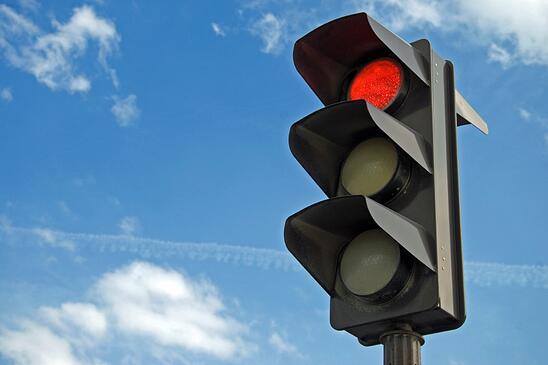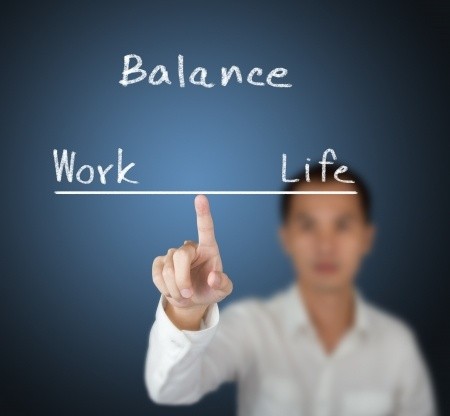
Humans are prone to doing whatever takes the least effort—even though our brains want us to do the opposite and challenge ourselves. We are a little contradictory. The high brain wants the gratification of growth, while for the autopilot brain the default is to instant gratification and expending as little effort as possible. The TV remote may be the ultimate instrument for this impulse.
At the office, the “easy” reflex results in rote and last-minute behavior, along with the anemic productivity that comes with them. It’s why I usually hear from clients when overwhelm has peaked or work-life balance survey scores are underwater.
HARDER THAN IT IS
It may seem like it’s easier to work on rote and avoid change, but it’s actually much harder, as clients learn in our work-life balance trainings. When we are stuck on reflex, that keeps us locked in habits that drive stress, slow us down, and make tasks more aggravating than they actually are.
Take interruptions, for example. Left unmanaged, they not only make it much harder to focus and finish the task you are on, but they also make anything you do seem more difficult than it is. They change the perception of the work to something harder. So which is easier? Managing interruptions or being managed by them?
It’s a no-brainer, as it is when it comes to letting devices call the shots or corralling them, so we are in charge. Do nothing and unbounded devices and messaging run amok, adding to workloads and disruptions that slow everyone down. Do out-of-control messaging and constant disruptions make the work easier or harder? Cut the volume of email and check it at set schedules, and you can reduce the amount of interruptions from 96 (checking every five minutes) to three or four times a day, the most productive checking schedules, report researchers at U. C. Irvine and Oklahoma State.
We can all free up hours of time to focus and get work done with a system that manages messaging. This makes changing how we work a lot easier than being bombarded by the anarchy of the status quo. But the law of least effort is seductive and most people today are also caught up in the autopilot of busy-ness, a condition that makes us think we can’t stop for a second, or it will be apocalypse now.
A HEALTHIER ROAD TO SUCCESS
Work-life balance is a process of stopping for a moment to find easier ways to work, of getting tools to carve out the space to live a quality life and take care of personal responsibilities and map out a healthier road to success. In our work-life balance programs we bring your team the best strategies vetted by the research to stop doing things the hard way and start doing things the smart way.
Bad work-life balance survey scores and crazy-busy workplaces rife with overwhelm are clues that things could be done a lot easier. If your team is drowning in meetings and teleconferences, that’s doing it the hard way. If deadlines are out of whack with reality, that’s doing it the hard way. If people are working in a way that drives stress and burnout, that is really doing it the hard way. Stress undermines intellect and drives irrational decisions.
A host of research and best practices tells us that we don’t have to do it the hard way. Instead, with the right self-management, boundaries, and effective norms, any team or organization can get work done faster, communicate more clearly, de-clutter brains, and help employees activate lives off the job too. It all comes from avoiding the temptation to keep muddling through with the same-old, same-old.
Work-life balance training is about solving problems, taking inefficient habits and turning them into effective practices that create the space to think and manage demands and devices. It’s a collaboration in which we work together to identify the bottlenecks and pressure points that drive productivity and work-life south and get solutions that make work and life easier.
UNLEASHING EMPLOYEE ENGAGEMENT
I’m working with a client now on a post-work-life balance training sustainment program, two months of developing and practicing skills of sustainable performance. The managers of this global firm, with offices from Stuttgart to Hong Kong, Brazil, and the U.S, are super-enthused as we troubleshoot bottlenecks, set new norms, and make their days more effective. Each new practice they use to manage information or global time zones, or strengthen the work-family perimeter inspires more employee engagement—the very extra effort our species has an aversion to at the most basic level.
It turns out that effort isn’t a problem for people who are encouraged to participate and solve problems. In fact, we all are designed to be self-starters, to have a hand in writing our own script. Initiative and proactive behavior pay off core psychological needs, such as competence, autonomy, and connection with others as well as the quest our brain neurons have for novelty and challenge—the two key elements in long-term fulfillment
So when it comes to working smarter with a work-life balance training, it’s a win-win-win-win. We improve work effectiveness, satisfy core needs, unleash the fulfilling powers of novelty and challenge, and inspire the discretionary effort that comes from employee engagement. And along the way, we make work, and life, a whole lot easier.
If you would like more information on our work-life balance training program, click the button below for details.


















